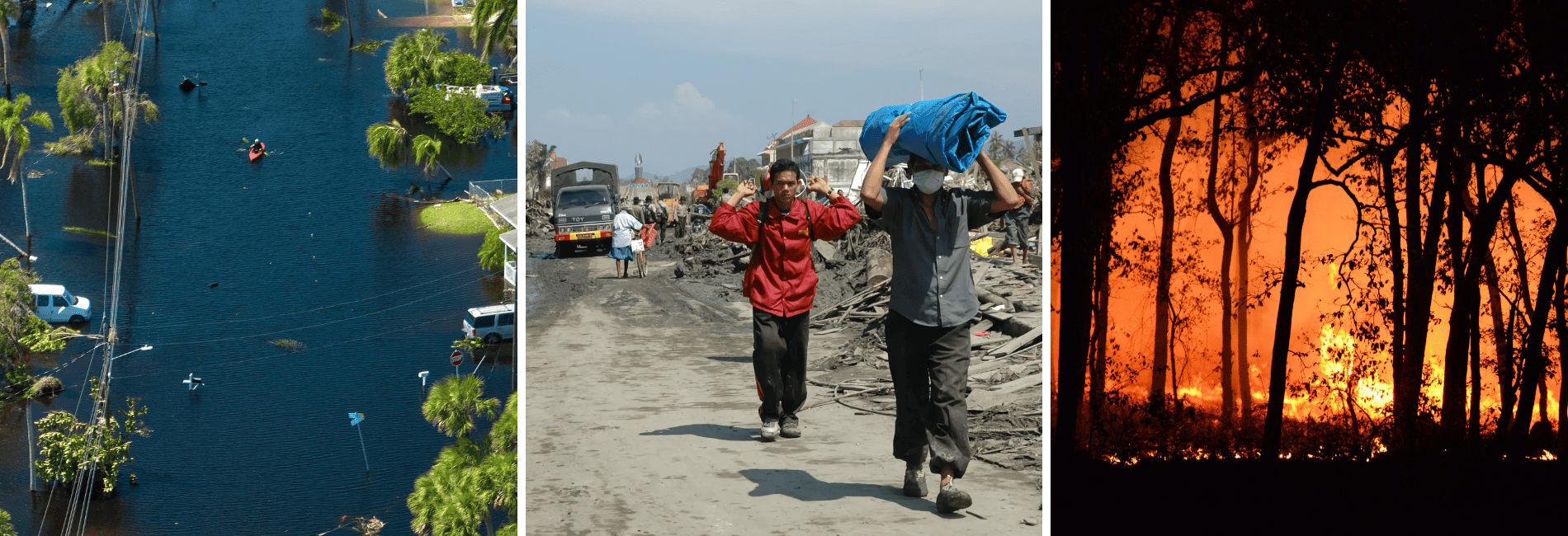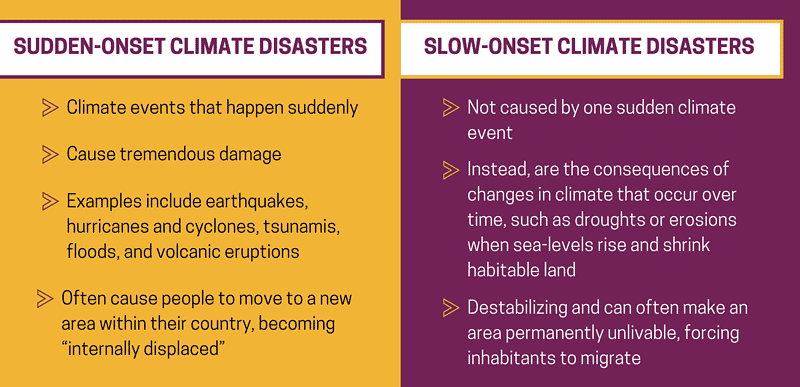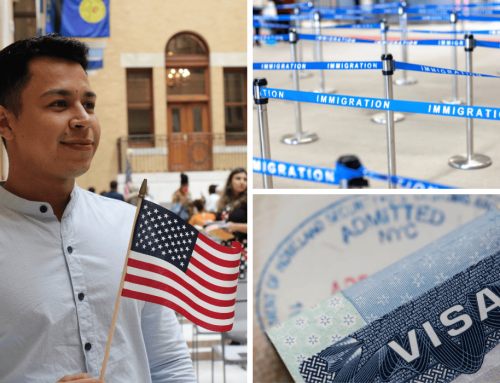
6 things to understand about how the climate crisis is displacing people worldwide and what we can do to help
“The period of global warming has ended; the period of global boiling has arrived,” United Nations Secretary General Antonio Guterres announced during another record-breaking summer for global temperature in 2023. Global warming affects food and water supplies, causes rising sea levels that decrease livable land, and creates destructive natural disasters. It’s already a factor in displacing millions from their homes worldwide each year, often termed “climate refugees.” Countries around the world need to prepare for this problem to get much worse if trends are not reversed, and as we work to reduce the causes of climate crises, we also need to better protect the people most at risk.
Here are 6 important things to know about “climate refugees.”
1. “Climate Refugees” are people who have been forced to leave their homes because of the effects of climate change, but the term isn’t entirely accurate.
“Refugee” is a term with a precise legal meaning. Defined by the United Nations High Commissioner on Refugees, refugees are people who have left their home countries and are unable or unwilling to return because of a well-founded fear of being persecuted for reasons of race, religion, nationality, membership of a particular social group, or political opinion. When granted, refugee status gives people important rights in their new country, allowing them to stay, work, and receive life-changing support from resettlement agencies like IINE. Currently, refugee status is not legally conferred to people who lose their homes because of the climate crisis.
“Climate displaced persons” is a more accurate umbrella term for those displaced by the climate crisis. The term “climate migrants” often appears in the media, but only describes those planning to stay at their destination temporarily.
2. Not legally considered “refugees,” people displaced by climate disasters are not protected by international law.
Legislation has been proposed to protect climate displaced persons, but so far has stalled. U.S. Senator Ed Markey (D-MA) introduced a bill to establish a Global Climate Change Resilience Strategy in 2019, and then with Nydia Velásquez (D-NY) in 2021, and again on November 20, 2023, with IINE’s endorsement. Among other needed measures, it would create a U.S. resettlement pathway for climate displaced persons.
3. Climate disasters can destroy homes either very quickly or slowly over time.
Climate disasters can take two forms: sudden-onset and slow-onset.

Sudden-onset climate disasters are events that strike quickly and cause tremendous damage like earthquakes, hurricanes and cyclones, tsunamis, floods, and volcanic eruptions. In many cases, they cause people to migrate to new areas within their own countries, becoming “internally displaced.”
Slow-onset climate disasters are not caused by one sudden event but are the consequences of prolonged stressors like droughts or slow but devastating erosions like when sea-level rise shrinks habitable land. These disasters can be not only destabilizing, but in some cases, make places permanently unlivable.
4. Even when not the sole cause, climate disasters worsen other causes of displacement.
Seventy percent of refugees and eighty percent of internally displaced people have fled from countries that are among the most affected by climate crisis according to the UNHCR, the U.N.’s refugee agency.
Climate change is a threat multiplier. For countries struggling with stressors like poverty and job loss, competition over dwindling resources, damaged infrastructure, and government corruption, climate disasters make these challenges worse, which can enflame tensions, provoke conflicts and push people to the breaking point of needing to leave their homes.
Climate disasters can also make people more vulnerable to becoming victims of human trafficking. “Traffickers can exploit [climate crisis] conditions by promising food, shelter, and other resources, sometimes posing as disaster responders or social service professionals to gain trust,” according to the U.S. government’s Office on Trafficking in Persons.
5. Globally, women, children, persecuted minorities, indigenous people with strong ties to their land, lower-income people, and migrants of all kinds are disproportionately at risk from climate disasters.
Disadvantages can be dire. These populations are more at risk because they tend to have less decision-making power, fewer government protections, fewer resources to adapt to climate-related shocks, more to lose when land becomes unfarmable, and less ability to resist when others try to force them to leave their land or take their resources.

The “climate justice” movement also points to the fact that those who have contributed least to the climate crisis—counties that are less industrialized and less affluent—are disproportionately affected by it and should be compensated. An often-cited study in The Lancet pins 92% of excess CO2 emission on the United States and the European Union.
6. To minimize climate change’s negative impact and best protect the most vulnerable populations, we must prepare now.
We can lessen this crisis through cooperation and collective action. There is much to be done, including:
- Supporting well-defined legal immigration pathways, humanitarian protections, and freedom of movement across borders for people displaced by climate disasters. Read about Sen. Markey’s proposed “Climate Displaced Persons Act.”
- Supporting the many climate mitigation projects led by indigenous peoples, refugees and internally displaced people who are often both most at risk, and most knowledgeable about sustainability.
- On the local level, supporting affordable and sustainable housing and sustainable infrastructure to make room for more people long term. Read the recommendations of Massachusetts’ new “Climate Chief” and
read about the process of updating New Hampshire’s Climate Plan. - Ensuring that new arrivals to the U.S. have access to information in their own languages about local efforts to mitigate climate change, and rights, protections, and procedures in the event of local climate emergencies.
- Contributing to efforts to reduce and mitigate carbon emissions and increase sustainability on the local level.
- Committing to welcome and support climate displaced people in all the ways we currently welcome and support refugees.
As more people are displaced worldwide by the climate disaster, IINE is prepared to welcome them. We are proud to provide life-changing services to more than 10,000 refugees and immigrants every year. Please consider donating today to support our work.







